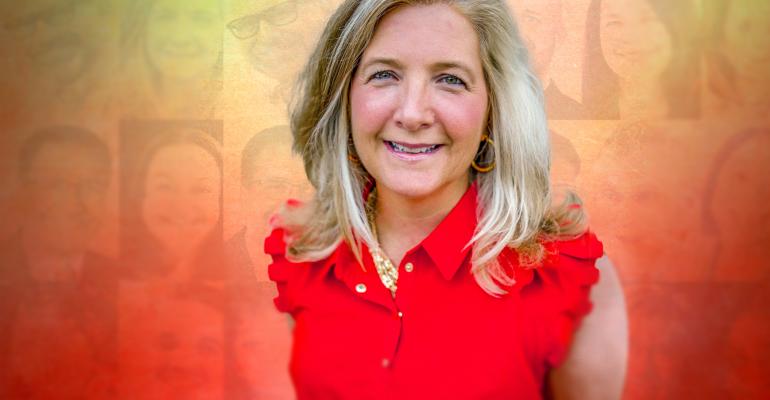MeetingsNet’s 2022 Changemakers list recognizes outstanding meeting professionals for their efforts to move their organizations and the industry forward in unique and positive ways. Find the full 2022 Changemakers list here.
Jamie Schwartz
Senior Director, Individual Performance Strategy, Creative Group
For helping clients adapt their incentive programs during the pandemic, then helping her firm revamp its approach so clients can motivate the post-pandemic workforce
Even with more than 20 years of experience in the incentive business, Jamie Schwartz had her hands full in her first months on the job at Creative Group. It was early 2021, a time when most of the firm’s incentive clients canceled their travel-reward programs for 2020 qualifiers and needed alternative means of employee recognition, and quickly.
Schwartz and her team helped clients pivot to a combination of reward solutions within Creative Group’s portfolio, giving top sales achievers the option to choose from individual travel experiences, curated merchandise bundles, and gift cards. In addition, she worked with other departments to help clients pair the announcement of new reward offerings with polished virtual celebrations that featured entertainment between recognition segments led by a client’s top executives.
From that experience, Schwartz came to a realization that changed the way Creative Group approached the market. “Until then, I’d say we primarily saw ourselves as an event-solution provider,” she says. “But as we started to peel things back out of necessity, I recognized that we’re also a performance-solution provider. We just had to define our portfolio more clearly—organize it and promote the full scope of what we can do in a way that is easily understandable to clients.”
Even after doing that, though, her work was far from done. There was the challenge of training sales reps who had not previously sold the full range of travel and merchandise products; they needed product education, skills development, and trust in the new approach. Schwartz’s solution: Training events that were heavy on peer-to-peer learning.
“We had reps who were delivering well on individual incentive travel, and others on merchandise fulfilment. It was a matter of getting all of them to be disciplined and confident in what we’re trying to do,” she says. “So, we had them share their stories among each other in between training sessions, just building up each other’s confidence. The light bulb went on, and it’s showing up in our business.”
Another area where Schwartz is leading change is client audits and return-on-investment calculations, all of which must account for the changing mindset of the post-pandemic workforce. “We’re doing some complex work in auditing existing programs and designing new ones, because the landscape is different now. Clients are saying, ‘Improving sales isn’t our biggest issue. We have to get people to show up to work.’ So, we get data on who’s showing up and who isn’t, and we drive the desired behavior by offering small rewards that can add up over time. It’s simply expanding the way companies see the possibilities with incentives.”
With traditional travel-reward events, Schwartz sees “a lot of the meeting and incentive professionals who work on them being shifted closer to their marketing organization. More of them are reporting into the chief marketing officer and being asked, ‘What’s the ROI for your programs? How will it pay off for us?’ It’s rewarding for me and my team to bring the right data into the conversation about how to model ROI for the next program.”
Advice for Driving Change
“Be sure that you’re leading your initiatives with a thought-out and calculated plan—don’t rush things to rollout before you’re ready,” Schwartz says. “And getting the plan ready takes data and insight. However, gathering data from different systems can be a challenge and be expensive.”
“But you could also use some simple ways to gain insight, like short surveys or other qualitative things like focus groups or individual interviews,” she adds. “Even if it’s just 10 or 12 program participants and managers, you’ll find common themes to guide the direction you go. My team and I talk to participants in each program and we talk to the executive leadership team, so we’re able to supplement what we see in the hard data with the reality of what people are going through.”





